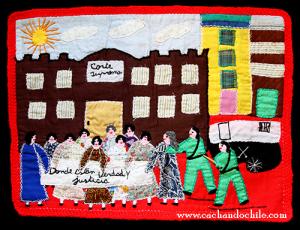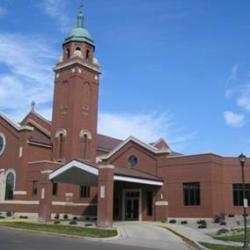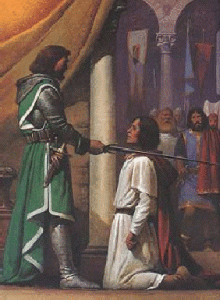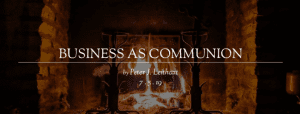
The Church in Chile had confined itself to matters of the soul and the spirit as the Pinochet regime took increasingly brutal control of the country. Eventually the Church emerged from those restrictions and became an effective, true Body of Christ in opposition to the regime and solidarity with the people. In three sections of a final chapter Cavanaugh presents three ways that the Church in Chile learned to respond to torture. One, the bishops exercised their power of excommunication. Two, they set up the Vicariate of Solidarity. And, three, lay Catholics and clergy organized what they called the Acevedo Movement against Terror. A final section explains the centrality of Eucharist in the Church’s response to torture.
On Chapter six of Torture and Eucharist: Theology, Politics, and the Body of Christ, ninth in the series on William T. Cavanaugh. He is a Catholic theologian who writes about the Church and its role in culture, politics, and economics. Introduction to Cavanaugh and links to blogs in the series as they appear are here.
The Church in Chile had to learn that it was not just an institution, not even a mystical thing, the Body of Christ, but a action. The Church became a performance of the true Body of Christ in the Chilean world in three ways, three acts.
1. Excommunications
Not every serious sin carries the penalty of excommunication. The Church has traditionally had in mind certain sins that do warrant such a discipline. The Church in Chile came to see that that list should include sins which attack the common good and “the unity which signifies communion.” (p. 254) Cavanaugh explains:
The gravity of an offense is often invoked in separating ordinary sins from sins meriting excommunication. I would argue that this not be understood as simply a matter of degree but of kind. In other words, excommunication is not reserved for those individuals who simply outdo the rest of the church’s ordinary sinners in the number or degree of their sins. Excommunication is better understood as applicable to those kinds of sin which impugn the identity of the body of Christ. (p. 247)
In 1980 seven bishops identified torture as such a sin and said it applies to anyone who participates in torture, solicits it, or has power to stop it and doesn’t. One might wonder why the same has not been said when other countries, like the United States, practiced torture. Catholic bishops condemned the use of torture during the Second Golf War but correctly did not repeat the Chileans’ use of excommunication. Torture in Chile was not just an offense against individual victims but primarily against the whole society. It was an attempt to confirm government control over a society of isolated, fearful, and mutually suspicious individuals. The justly condemned use of torture by U.S. agencies was not of that sort.
Excommunication latae sententiae
The bishops of Chile said excommunication applies latae sentatiae, or automatically. This spared them the difficult task of naming individuals they wished to excommunicate. The use of excommunication was a bold move. It was the first time that the Chilean Church applied excommunication in a political matter (i.e., other than abortion or divorce) and where the hierarchy itself was not threatened. The bishops saw that the whole body of Christ, not just the leadership, needed protection.
The automatic nature of the excommunication in the bishops’ decree still was a problem. It left the public reception of that penalty up to the consciences of the individuals. It named no torturers, exposed no secret torture centers. The excommunication certainly applied to the top man in the country. Pinochet either ordered the tortures or, obviously, could have stopped it. But no one told him that. As an act of the Church in the public realm, it was weak. Few torturers came to confess their sin. (p. 258-59)
Excommunication medicinal and eschatological
Excommunication bars a person from Eucharist, the enactment of “the body of Christ now, in time.” For an individual Catholic, of course, that is punishment, but there’s a deeper meaning. It’s not condemnation but the hope that the person will “turn and be saved.” (p. 240) Excommunication clarifies for the sinner the seriousness of the offense, and shows the sinner the way to reconciliation with the body of Christ. Meanwhile it shielding the sinner from the adverse effects of continued participation in the Eucharist in the absence of true reconciliation. (p. 243)
Participation in the Eucharist demands right conduct as well as right internal disposition. The second-century document the Didache admonishes:
Anyone who has a difference with his fellow is not to take part [in the Eucharist] with you until they have been reconciled, so as to avoid any profanation of your sacrifice. (p. 238)
Not that the Church, which celebrates Eucharist, hasn’t profaned and defiled itself. It is a group of sinners, after all. The body of Christ will stand out fully only in the Eschaton, when Christ will come to inaugurate the Kingdom of God. But in Eucharist, that Kingdom is present at least as foretaste and anticipation. What a contrast with the Chilean state during the Pinochet years, which
declared the Kingdom of God indefinitely deferred. The poor are told to suffer their lot quietly and invisibly. In the Eucharist the poor are invited now to come and to feast in the Kingdom. The Eucharist demands real reconciliation of oppressed and oppressor tortured and torturer. Barring reconciliation, Eucharist demands judgment.” (p. 263)
Excommunication is a judgment against individuals but it is much more than a private act. It helps the community see the true nature of the Church. It points to the Eschaton.
2. The Vicariate of Solidarity: Body of Christ as an alternative society
Almost from the beginning of the regime of torture and terror in Chile, the Church organized programs to counter torture’s effects. The regime declared itself Christian, and even Catholic. That gave the Church some immunity from laws that barred or severely limited other types of banding together for mutual support. The Church became the only public body able to operate independently of and in opposition to the state.
The Committee of Cooperation for Peace in Chile (COPACHI) provided legal aid to the regime’s victims, including those fired for political reasons. Torture brought about an atmosphere of fear and distrust. Laws obstructed intermediate associations between the individual and the state. But COPACHI established parish-based social programs. It helped unemployed people organize to meet basic necessities and find other sources of income. It established health clinics when the state dismantled its health programs. Among other things it sponsored soup kitchens, youth clubs, cottage industries, and “groups for relatives of political prisoners.” (p. 264-65)
General Pinochet forced COPACHI, an organization only loosely tied to the Church and including non-Catholic sponsors, to close. Immediately Santiago’s Cardinal Silva established the Vicariate of Solidarity under the sole auspices of the Catholic Church. It intensified COPACHI’s work, becoming a network with legal, informational and social functions.
Arpilleras
Women’s support and employment groups were especially important. Some of these groups engaged in eloquent criticism of the regime in the form of arpilleras. They wove scenes of suffering people and protest into clothing, blankets, and banners sewn from odd bits of fabric. (p. 265-66)
Solidaridad was not only the name of the Vicariate; it was a key word among the poor and in church circles which captured the realization that the only way the regime’s social control could be resisted was through cooperation and membership in one another. (p. 266)
In an image taken from the women’s arpilleras, a saying described the Church as knitting people back together. Where torture and disappearances left people as isolated individuals, the Church undertook “the fundamentally Eucharistic task [of] building up the true body of Christ.” (p. 267)
3. Martyrdom: Chileans suffer voluntarily with and for others
In Chile the Church responded to an emergency. One could say that the Church, in general, is in essence and everywhere a response to an emergency. This emergency is all of history.
Ten years into the reign of terror in Chile a “movement against torture” sprang up among the people. It began carrying out public protests. Protesters appeared suddenly in places symbolic of the regime’s worst practices. They waved banners and signs, sang, and disbanded quickly. When caught they offered no resistance.
The regime took a construction worker’s two sons into custody. Unable to find his children’s whereabouts,
… Sebastián Acevedo sat down at the foot of a cross in front of the Concepción cathedral, doused himself with gasoline, and set himself on fire. A passing priest gave him last rites and captured his words with a tape recorder: “I want the CNI to return my children. Lord, forgive them, and forgive me too for this sacrifice.” (p. 273)
The protests continued under a new name, “Sebastián Acevedo Movement against Torture.” The movement makes unmistakable what it means for the Church to take on the body of Christ in opposition to tyranny. It means martyrdom.
Victims and martyrs
The victims of torture emerged from isolated, anonymous suffering. With their names and sometimes their torturers’ names proclaimed publicly in the streets, they became martyrs, public witnesses against the “powers of death.” The protesters themselves risked the same destiny, not willing martyrdom for themselves but willing to identify with the suffering members of the body of Christ. They risked being beaten, hosed, gassed, dragged into prison.
The actions of the protesters are truly liturgies. The ritual of the street protest makes “the tortured body, which has been disappeared by the state, miraculously appear in the bodies of the protesters.” (p. 276)
Suddenly the silence and invisibility under which the torture apparatus operates are shattered, interrupting its power. In an astonishing ritual transformation, clandestine torture centers are revealed to the passersby for what they are, as if a veil covering the building were abruptly taken away. (p. 275)
The redemptive suffering of Christ, the suffering of the imprisoned, and the freely accepted suffering of the protesters became one. The members of the Movement spoke of “carrying the cross of Christ.” (p. 276)
The people of Chile endured and resisted 17 years of Pinochet and his brutal regime. It was a learning time for the Church. Gradually the Church learned to be not just a sign of a Kingdom in a far-off world but the performance of true Body of Christ in this world, where the Kingdom of God must begin.












